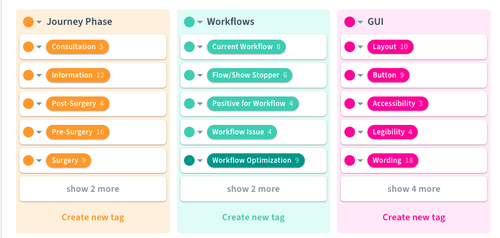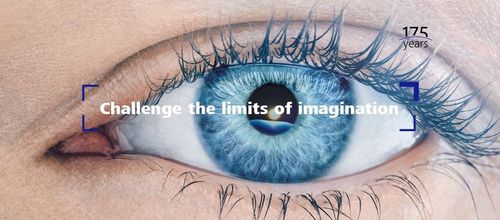ZEISS implements a central research repository making research more accessible
About the company
ZEISS is an internationally leading technology enterprise operating in the fields of optics and optoelectronics with over 35,000 employees. For its customers, ZEISS develops, produces, and distributes highly innovative solutions for industrial metrology and quality assurance, microscopy solutions for the life sciences and materials research, and medical technology solutions for diagnostics and treatment in ophthalmology and microsurgery.
With more than 35 people in different departments, the UX team introduced Condens as their internal research repository to support their UX research practice and make research and research findings more accessible to the broader company.

The Challenges
Within ZEISS multiple teams conduct UX research mostly independently but with overlapping areas at the same time. There are dedicated researchers in the teams, but other people research from time to time depending on current projects.
Two main circumstances made the UX team look for a research repository:
The UX researchers needed support with frequent and recurring research tasks, especially with the time-consuming manual transcription of user interviews.
User-centric product development became more important in the whole company. Therefore the UX team was rethinking storing research data and making research data accessible to the broader company.
Looking back on the starting point, Liesa describes how research knowledge storage changed with a research repository:
„Before we introduced Condens, our knowledge from UX research studies was distributed in different SharePoints, files, and platforms. Now we finally have one single source of information.“
The UX Research team started looking for tools facilitating automated transcription and research repository functionality. Summarized, the main categories they compared were:
- Automatic transcription service
- Tagging possibilities on different levels
- Sharing research with stakeholders
- Giving non-researchers access to research
- Managing access to research data and findings
- Creating research highlights
- GDPR compliance, incl. server location in Germany
The UX team at ZEISS compared different tools and solutions, started tool trials, and organized tool demonstrations to find their future research repository tool based on the collected requirements. After deciding on Condens from a research perspective, the Global IT and Data Protection team checked the tool separately, ensuring it meets high data security requirements in the medical field.
The Implementation
In 3 steps, the UX team ensured that the new research repository was set up for success - meaning getting everyone on board, familiarized with the tool, and aligned on internal practices on how the repository will bring value to the whole company.
Step 1: Kick-off product tour
UX Research Lead Liesa and Condens invited everyone from the UX team to a Condens product tour, where the team could get to know the tool and address company-specific questions to the usage. This event also marked the internal kick-off to conduct, analyze and share all new research projects with Condens. This way, researchers are supported in their research analysis from this moment on, and the data becomes part of the research repository simultaneously.
Step 2: Team workshops on taxonomy
By conducting several internal workshops with each department conducting user research, the teams developed their unique repository taxonomy and defined internal tagging best practices. This taxonomy consists of tags organized in different groups that reflect the current company and research focus. A tag gets applied when an interesting and relevant piece of information comes up in the research data, preparing the research data for analysis later on. The whole taxonomy aims to generate the best possibilities to search and filter research data in the future.
Besides defining a final set of global tags jointly, everyone needed to get the chance to familiarize themselves with the tags and what the whole team wants to put in the center of awareness on an overarching level. In addition to this set of global tags, the team aligned on a more flexible usage of tags within projects. This means: Within single research projects, new project-specific tags can be created, named, and adapted anytime, and global tags get applied from their internally predefined set. In retrospect, Liesa describes how the collaborative kick-off workshops have been worthwhile:
„We conducted several workshops to define our tagging structures for each team. This was definitely a lot of work at the beginning, but it paid off: now we have a uniform tagging structure that is supported by the whole team.“
Here’s a glimpse of their global taxonomy:

Step 3: Migrating existing research to Condens
In addition to using Condens for all new research projects, the UX team decided to bring existing research projects to the research repository. Therefore, some final research study reports were added initially, allowing instant searchability.
Besides that, the team identified crucial research projects that they want to bring to Condens completely, including raw data and data analysis steps.
To manage this task, they are currently spreading the addition of existing research data over a more extended period, so they add previous research step-by-step with the help of different team members.
The Results
By introducing Condens as their research repository and research analysis tool, the UX team is supported in a variety of ways:
Handling participant data GDPR compliant
Research in the medical field contains sensitive information and highly confident data, so making the repository secure and GDPR compliant from the beginning on was essential to the team.
With Condens, the team can granularly manage who can see participant information. For example, they can decide on including or excluding participant information in research results with just one click. With highly independent research endeavors in different teams, the UX team further agreed on using multiple workspaces to make raw research data accessible to exactly those who need to see the complete data.
Further functionalities like, for example, consent form attachment in participant profiles or the option to delete research recordings but keep the transcript, help the team handle participant data confidentiality.
Easing the research workflow
Condens is built for researchers, so the whole process from planning to sharing user research gets supported. For example, the UX team at ZEISS eases their workflow with these features:
Automated transcription in different languages speeds up the process: Researchers can start analyzing data quicker and not have to transcribe research sessions anymore.
Downloading highlight reels and research highlights (= anecdotal user quotes or moments of research sessions) allows them to use research easily in workshops or meetings. For example: They bring research highlights from Condens to Miro to reference research findings in a workshop on a digital whiteboard and integrate user research results closely to company practices.
By using tool integrations to the software the team is already using, like OneDrive, Microsoft Teams, or Miro, they can easily import data to Condens or share research from Condens.
Democratizing access to research
The UX team at ZEISS introduced the stakeholder repository, a dedicated interface made for stakeholders to access research findings. The goal is to enable non-researchers to learn about existing research and create a helpful go-to place when a new question arises. With this, they want to enable stakeholders to see what research knowledge about a specific product, device, feature, or user experience phase is already available at any time, without accessing research raw data or ongoing, not completed research data. Liesa describes:
„We now have a much better opportunity to involve our stakeholders in the research studies and to share the results. This creates trust and transparency and motivates our stakeholders to invest in research.“
Connecting research data across different projects
The introduction of Condens supports the UX Research team to draw conclusions across research projects and connect evidence beyond single studies. For example, the team plans to enrich their user journeys and personas with research evidence from different projects.
Want to read more about UX research repositories? Check out our articles about what a UX research repository can do for you and the design considerations behind a research repository.

